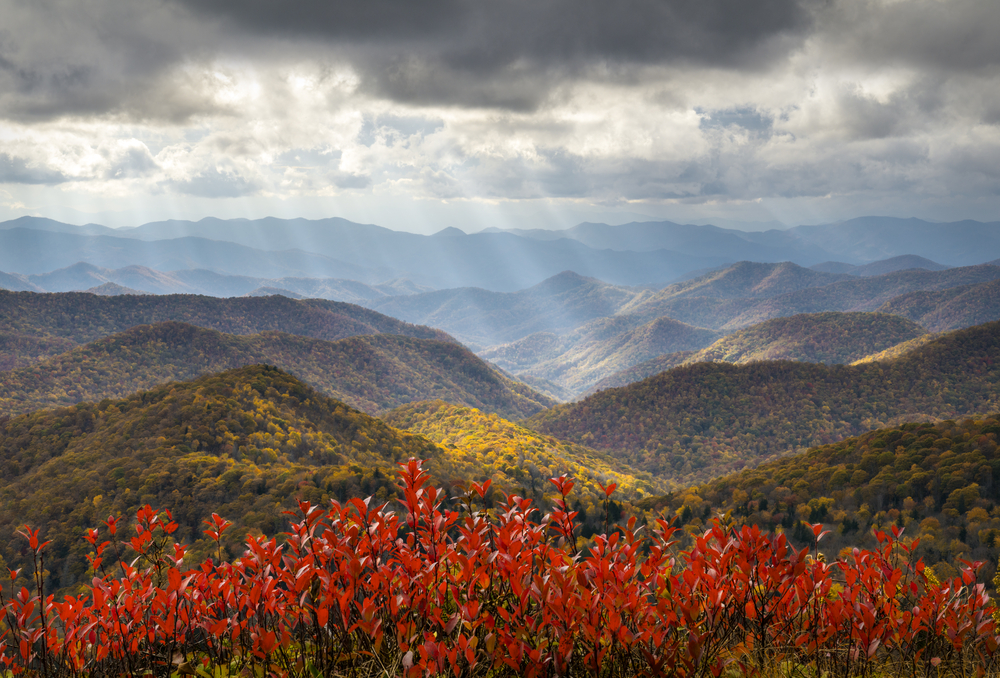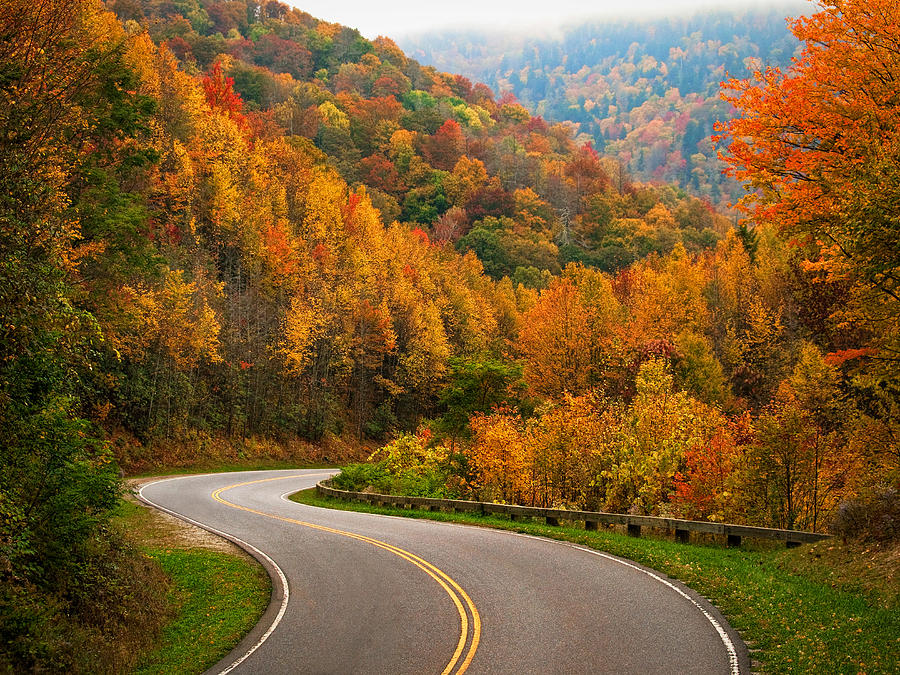
Anthocyanin is produced in response to lots of light and excess plant sugars within leaf cells. This may be due to the fact that the pigment anthocyanin, which gives color to such familiar things as cranberries, red apples, and blueberries, is in high production because of drought conditions. At this part of the autumn season, some areas of the Smoky Mountains are showing more reds throughout the landscape than in other years. A few scattered maples and oaks are showing the first signs of fall colors in lower regions of the Smoky Mountains.Ī succession of warm, sunny days and cool crisp, but not freezing nights will bring about the most spectacular color display.

Golds are coming along on tulip tree, black walnut, birch, beech, and hickories. In the valleys, black gum, dogwood, sumac, and sourwood trees continue to show vivid reds.

The peak of color at the lower elevations is over a week away.

These conditions will affect the timing, duration, and intensity of fall leaf season. The park continues to experience very dry and warmer-than-normal conditions. It is the sunny days and cooler nights that instigate the biochemical processes in the leaf. Mid-Octoberīy mid-October at the lower elevations, fall color is nudging along. Also, roads leading into the high country, including Newfound Gap Road, Heintooga Ridge Road, Foothills Parkway West and East, and Rich Mountain Road out of Cades Cove, are the best options for seeing fall colors in the Smoky Mountains. Recommendations: High elevation trails such as Sugarland Mountain Trail and Appalachian Trail, accessed at Clingmans Dome or Newfound Gap, would be good hikes for this time of year. Fall wildflowers such as mountain gentian, black cohosh, and goldenrod are colorful throughout the park and some blueberry and blackberry shrubs are also in color, as well as the Virginia creeper plant.īecause the Great Smoky Mountains provide a range of elevations between 875 and 6,643 feet with differing moisture conditions and habitats, many trees will still produce significant color as the park moves into its peak autumn season. Sourwood and sumac are showing bright reds some dogwoods and maples are turning different colors in some areas as well. The majority of the deciduous forest at 4,000-feet elevation and below is still predominantly green, but now with splashes of color dotting the slopes. The big rounded leaves of witch-hobble are showing fine displays of color ranging from yellow to red. Fall wildflowers such as goldenrod and asters are colorful throughout the park and some blueberry and blackberry shrubs are also changing color, as well as the Virginia creeper plant.īright golds and yellows of American beech, yellow birch, and yellow buckeye and different shades of reds on mountain ash, pin and black cherry and mountain maple are painting the landscape. Some dogwoods and maples are beginning to turn different colors in some areas as well. In the lower elevations, a few early color changing species such as sourwood and sumac are showing bright reds now, but are scattered.

Early Octoberīy the beginning of October, trees in the Smoky Mountains high country that are now showing bright fall colors are the yellows of American beech and yellow birch and different shades of reds on mountain ash, pin cherry and mountain maple. This is the park’s most spectacular display as it includes such colorful trees as sugar maple, scarlet oak, sweetgum, red maple, and the hickories. The fall color display usually reaches peak at middle and lower elevations between mid-October and early November. In the Smoky Mountains, autumn color displays above 4,000 feet start as early as mid-September with the turning of yellow birch, American beech, mountain maple, hobblebush, and pin cherry, clearly visible from such vantage points as Clingmans Dome Road. The timing of fall color change depends upon so many variables that the exact dates of “peak” season are impossible to predict in advance. View our Smoky Mountain webcams. Some 100 species of native trees live in the Smokies, the vast majority of which are deciduous. The kaleidoscope of fall colors in the Smoky Mountains is magnificent and varied because of the amazing diversity of trees. Autumn in Gatlinburg and Great Smoky Mountains National Park is a special time when a glorious leaf season of several weeks is enjoyed by visitors as fall colors travel down the mountainsides from the highest elevations to the foothills.


 0 kommentar(er)
0 kommentar(er)
